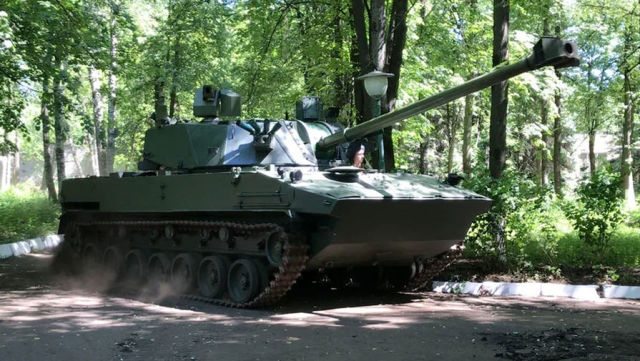Self-propelled artillery installation of "Lotus" has passed the acceptance tests
Russia is starting preliminary testing of the Lotus self-propelled artillery system developed for the airborne forces. The vehicle was created on the chassis of the BMD-4 combat vehicle. «Newspaper.Ru "- about the features of the new "self-propelled gun".
The Central research Institute of precision engineering (TSNIITOCHMASH) of the rostec state Corporation has completed acceptance tests of the promising self-propelled artillery gun "Lotus" (index 2C42). The combat vehicle for the airborne troops confirmed compliance with the specified tactical and technical characteristics; the operability of all components, mechanisms and devices of the gun meets the requirements of the customer, the state Corporation reported.
2s42 "LOTOS" is a Russian air-mounted floating self-propelled artillery gun of 120 mm caliber. The project was first presented at the Army-2017 forum in Patriot Park.
As explained by " Newspaper.Ru " Deputy Director Of the center for analysis of strategies and technologies Konstantin Makienko.
The 2C42 has an automated turret with a 120-mm gun, which is compatible with a wide range of 120-mm ammunition, including advanced ones. The crew consists of four people. The CAO 2S42 can be dropped in a fully operational state from military transport aircraft of the Il-76 type using landing parachute systems.
"Due to the need to install new large units on 2C42, the original BMD-4M body was lengthened while maintaining the layout and level of protection. The total mass of CAO is 18 tons. All crew members have their own hatches and viewing devices. The commander and gunner's seats are equipped with new optical-electronic sighting devices. Two crew members are placed in the front of the hull, and two more are in the combat compartment, " Makienko said.
Due to the lengthening of the body and the increased total weight of the car, the original BMD-4M chassis was increased to seven support rollers - two additional pairs were added.
The Lotus chassis is based on modern components, which gives operational advantages. The new chassis allowed us to get a significant increase in driving characteristics.
The power reserve is designed for 500 km.
The body of the BMD-4M has a lightweight bulletproof reservation. Its exact parameters are still unknown. CAO 2C42 retains the same protection, and also gets a tower with comparable durability. Thus, the level of protection from the enemy's barrel systems "Lotus", at least, is not inferior to the equipment of the Airborne troops in service.
Own booking of a new self-propelled gun has limited durability, and therefore survivability on the battlefield is proposed to increase at the expense of additional funds. In this regard, "Lotus" is equipped with a system of optical-electronic counteraction of circular action.
Along the perimeter of the vehicle, radiation sensors are installed for targeting high-precision weapons of the enemy. When irradiated, the automatics deploy launchers and fire smoke grenades. The latter create a curtain that blocks infrared and laser radiation. An important feature of this protection is its ability to detect radiation from all directions and all-angle shooting of grenades.
In 2C42, it is planned to install a new universal gun, which is a further development of the 120-mm 2a51 product with a longer barrel length and combines the main qualities and capabilities of the gun, howitzer and mortar.
CAO Nona-S carries 20 shells, and the new Lotus carries almost twice as many.
According to some sources, the Russian Airborne forces currently have about 750 CAO 2S9 "Nona". About a third of this number is used for equipping airborne units and formations. The rest are kept in weapons storage bases. Thus, to replace 2C9 in full, several hundred new "Lotuses"are required. The production of such a large number of artillery installations takes several years. Experts believe that in this case, the rearmament of the airborne forces will last at least until the mid-2020s.
Zavet-D was created on the basis of the BTR-MDM "Shell". The machine has been under development since 2016. "Zavet-D" received the latest equipment that allows you to detect and identify various targets, including disguised ones. It is also assumed that the vehicle's equipment will be able to interact with military unmanned aerial vehicles for various purposes.
"Zavet-D" should eventually replace in the airborne forces all outdated mobile points of intelligence and fire control type 1B119 "Rheostat", which have been in service for 36 years.
In addition to the small artillery fire control vehicle "Zavet-D", Russia has developed a larger automated complex of artillery intelligence 1B75 "Penicillin". It determines the coordinates of the target within a radius of 25 km.
Andrey Mikhailov

